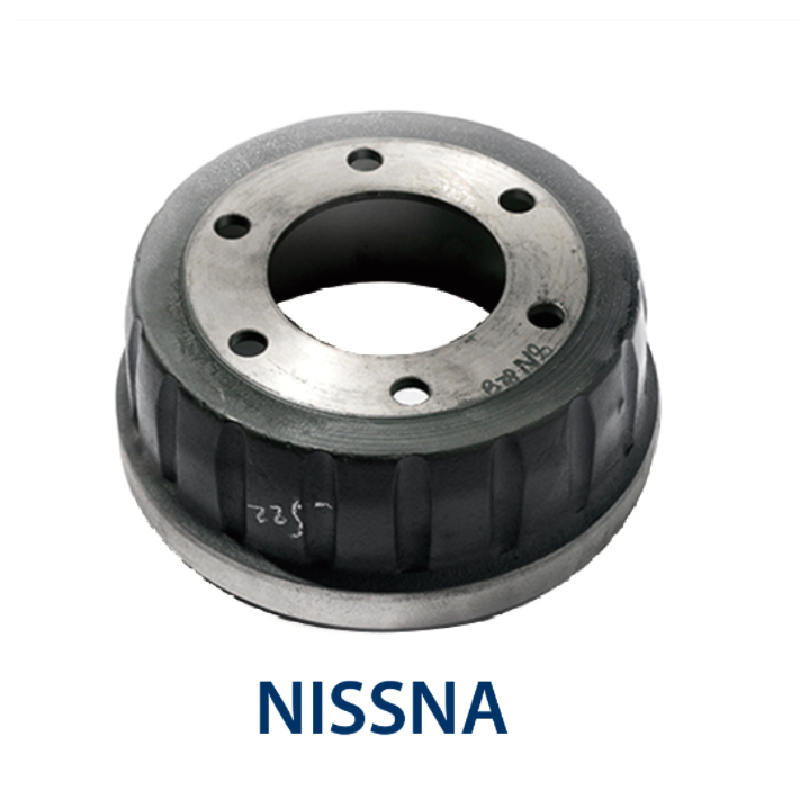ធ្នូ . 11, 2024 12:17 Back to list
parts of brake drum
Understanding the Parts of a Brake Drum
A brake drum is a crucial component of a vehicle's braking system, primarily utilized in drum brake systems. These systems are commonly found in both passenger and commercial vehicles due to their reliability and efficiency. To appreciate the functionality of a brake drum, it is essential to understand its various parts and how they contribute to the overall braking performance.
1. Brake Drum
The brake drum itself is a cylindrical component that rotates with the wheel. It is typically made from cast iron or steel, designed to withstand high temperatures and wear caused by friction. The inside surface of the drum is where the brake shoes press against to create stopping power. As the driver applies the brakes, hydraulic pressure forces the shoes outward against the drum, generating the necessary friction to slow down or stop the vehicle.
2. Brake Shoes
Brake shoes are arched metal components lined with a friction material, which can be made from various composites, such as organic, semi-metallic, or ceramic compounds. When the brake pedal is pressed, the brake shoes are pushed against the inner surface of the brake drum. The quality and material of the brake shoe lining will greatly influence the effectiveness and durability of the braking system.
3
. Wheel CylinderThe wheel cylinder is a crucial hydraulic component of drum brakes. It converts hydraulic pressure from the master cylinder into mechanical force to push the brake shoes against the drum. When the brake is applied, the fluid from the master cylinder travels to the wheel cylinder, causing it to expand and exert pressure outward against the brake shoes. This action ensures a swift and efficient braking response.
parts of brake drum

4. Return Spring
After the driver releases the brake pedal, the return springs play a vital role in retracting the brake shoes back to their original position. These springs ensure that the brake shoes do not remain in contact with the drum, which helps prevent excessive wear and overheating. Proper functioning of the return springs is essential for maintaining the longevity of the braking system.
5. Adjuster
Most drum brake systems incorporate an adjuster mechanism, either automatic or manual, to maintain the proper clearance between the brake shoes and the drum. Over time, as the brake shoes wear down, the adjuster compensates for this wear, ensuring that the shoe-to-drum contact remains optimal. This adjustment is crucial for effective braking performance and can help extend the life of both the shoes and drum.
6. Backing Plate
The backing plate serves as the foundation upon which the other components are mounted. It is typically made from stamped steel to provide structural support and protection for the brake assembly. The backing plate also serves to shield the inner workings from dirt and moisture, which can adversely affect braking performance.
Conclusion
The brake drum and its associated components work together seamlessly to ensure safe and effective braking in vehicles. Each part plays a specific role, from the drum itself providing the surface for friction to the wheel cylinder translating hydraulic pressure into physical force. Understanding these components helps vehicle owners appreciate the importance of regular maintenance and timely inspections of their braking systems. Proper care can enhance performance, improve safety, and extend the lifespan of the braking system, contributing to a reliable driving experience.
-
Volvo Brake Drum: OEM Quality, Optimal Safety
NewsAug.27,2025
-
Durable Brake Drum MAZ for Heavy Duty Trucks | High Performance
NewsAug.26,2025
-
FUWA: Premium Quality, Reliable Performance & Innovative Solutions
NewsAug.25,2025
-
Liza Brake Drum: Superior Quality & Performance for Safe Driving
NewsAug.24,2025
-
Iveco Brake Drum | Premium OE Quality for Daily & Eurocargo
NewsAug.22,2025
-
Your Brake Drum Man: Quality & Performance Parts
NewsAug.21,2025
